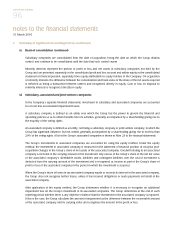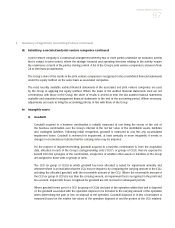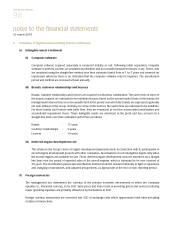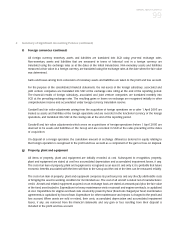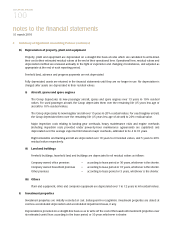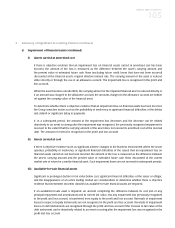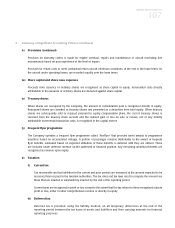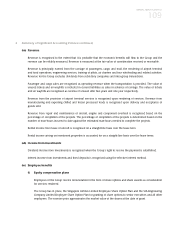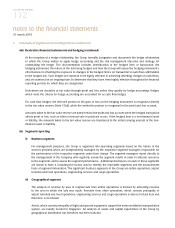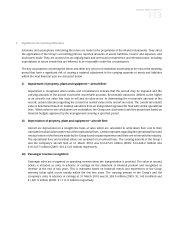Singapore Airlines 2010 Annual Report Download - page 108
Download and view the complete annual report
Please find page 108 of the 2010 Singapore Airlines annual report below. You can navigate through the pages in the report by either clicking on the pages listed below, or by using the keyword search tool below to find specific information within the annual report.SINGAPORE AIRLINES
106
notes to the financial statements
31 march 2010
2 Summary of Significant Accounting Policies (continued)
(s) Financial liabilities
Financial liabilities are recognised on the statement of financial position when, and only when, the Group becomes
a party to the contractual provisions of the financial instrument.
Financial liabilities are recognised initially at fair value, plus, in the case of financial liabilities other than derivatives,
directly attributable transaction costs.
Subsequent to initial recognition, derivatives are measured at fair value. Other financial liabilities (except for financial
guarantee) are measured at amortised cost using the effective interest method.
A financial liability is derecognised when the obligation under the liability is extinguished. When an existing financial
liability is replaced by another from the same lender on substantially different terms, or the terms of an existing
liability are substantially modified, such an exchange or modification is treated as a derecognition of the original
liability and the recognition of a new liability, and the difference in the respective carrying amounts is recognised in
the profit or loss account.
(t) Loans, notes payable and borrowings
Loans, notes payable and other borrowings are initially recognised at the fair value of the consideration received less
directly attributable transaction costs. After initial recognition, interest-bearing loans and borrowings are subsequently
measured at amortised cost using the effective interest method.
(u) Trade and other creditors
Trade and other creditors and amounts owing to subsidiary and associated companies are initially recognised at fair
value and subsequently measured at amortised cost using the effective interest method.
Gains and losses are recognised in the profit and loss account when the liabilities are derecognised as well as
through the amortisation process.
(v) Provisions
Provisions are recognised when the Group has a present obligation (legal or constructive) as a result of a past
event, it is probable that an outflow of economic resources will be required to settle the obligation and the amount
of the obligation can be estimated reliably. Where the Group expects some or all of a provision to be reimbursed,
the reimbursement is recognised as a separate asset but only when the reimbursement is virtually certain.
The expense relating to any provision is presented in the profit and loss account net of any reimbursement.
Provisions are reviewed at the end of each reporting period and adjusted to reflect the current best estimate. If it is no
longer probable that an outflow of economic resources will be required to settle the obligation, the provision is reversed.
If the effect of the time value of money is material, provisions are discounted using a current pre-tax rate that reflects,
where appropriate, the risks specific to the liability. Where discounting is used, the increase in the provision due to
the passage of time is recognised as a finance cost.


